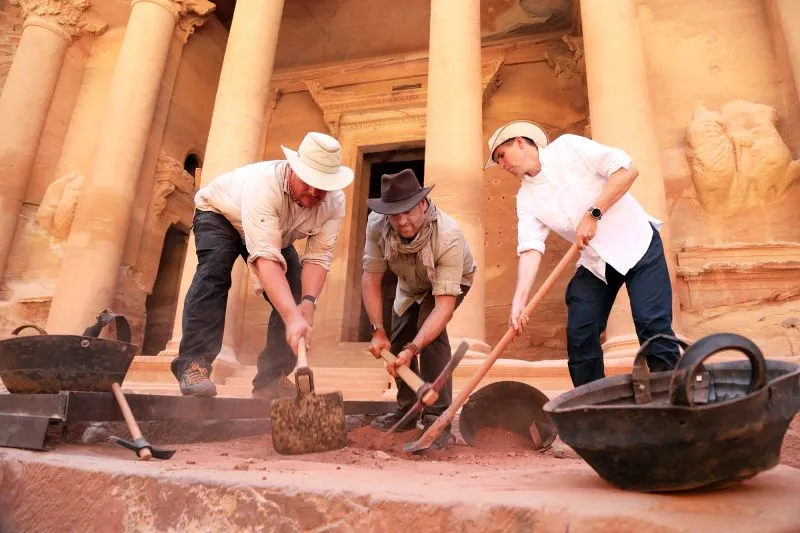Exploring the Petra Jordan Tombs: A Significant Archaeological Discovery

The Discovery of the Petra Jordan Tombs
At the heart of the ancient city of Petra, known for its remarkable architecture, archaeologists have made a groundbreaking discovery. Petra Jordan tombs were unearthed beneath the iconic Treasury, revealing at least 12 complete skeletons and various artifacts from around 2,000 years ago. This significant finding provides invaluable insight into the lives of the Nabataeans, an ancient society thriving in this region.
Methodology of Excavation
The excavation, led by Dr. Pearce Paul Creasman of the American Center of Research, utilized advanced ground-penetrating radar to locate the tomb. Historical skepticism over the site's potential for additional tombs was overcome by this evidence, leading to government approval for excavation.
Artifacts and Cultural Significance
Among the artifacts discovered were bronze, iron, and ceramic goods, including a ceramic chalice resembling the Holy Grail. Petra Jordan tombs offer a rare glimpse into the burial customs and social structure of the Nabataeans, who were known for their egalitarian society.
Future Research Directions
Further research will focus on DNA analysis of the remains, which may reveal relationships between the individuals buried. These insights can challenge and enrich our understanding of ancient Nabataean life.
The Petra Jordan tombs remind us that significant discoveries still await within this UNESCO World Heritage Site, revealing the depth of its historical narrative.
This article was prepared using information from open sources in accordance with the principles of Ethical Policy. The editorial team is not responsible for absolute accuracy, as it relies on data from the sources referenced.